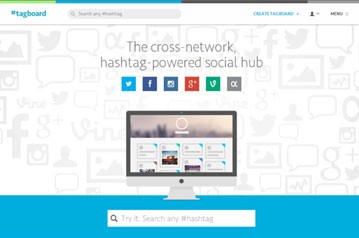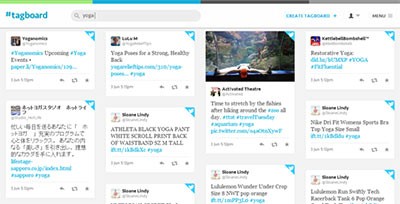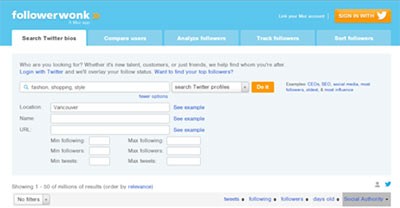Twitter is a highly effective sales tool for small businesses, especially for business-to-consumer (B2C) companies. According to eConsultancy, Twitter has a conversion rate of 2.17% while other social networks such as Facebook have 0.80% and LinkedIn has 0.74% when used by B2C businesses.
Many businesses could do a better job of discovering potential customers. If you’re a small B2C company, you can leverage Twitter for better customer discovery and acquisition. Here are three tactics you should consider and the tools you can use:
1. Monitor Hashtags
Monitoring hashtags, the # symbol that many users include in their tweets to mark keywords or topics (i.e. #healthydiet or #Android), helps you find consumers who fit in your sales bucket. For example, by keeping an eye on hashtags #health, #yoga, and #exercise, companies such as Lululemon can discover consumers who do yoga and are likely to purchase their yoga athletic clothes. Moreover, businesses can determine suitable opportunities to interact with prospects. For example, by keeping track of the hashtag #yoga, you may read that a user says she needs a new pair of #yoga pants. To seize this opportunity, you can let her know that your brand is offering 30% discount on all #yoga gear. This timely engagement will help you deliver relevant information to your prospects and increase your chance of making a sale.
Obviously, you can’t sit all day monitoring hashtags, so use a tool such as Tagboard. Tagboard is a hashtag monitoring platform that lets you specify the hashtag you want to track and generate tweets that contain the hashtag.

You can specify the hashtag you want to monitor in the search box:

Results generated from the specified hashtag, #yoga.
2. Identify and Interact with Your Competitors’ Followers
A good potential prospect is one who is already following your competitors on Twitter – an indication that they’re interested in services within your industry. For example, a person who follows Businessweek is likely a prospective customer for Time because they’re interested in a service that Time also offers.
An easy way to determine who is following your competitor is by using ScraperWiki. ScraperWiki is a data extraction tool which lets you download a Twitter account’s followers and followings (users it follows) onto a spreadsheet. For example, by using ScraperWiki, Businessweek can download Time’s
Twitter followings and followers and vice versa.
To use ScraperWiki to download a list of a Twitter user’s followings and followers, specify the Twitter account whose followings and followers you want to extract in the search box and you can generate a list of followings and followers. Once you have the list, you can start following the users listed in the spreadsheet, retweet their content, or spark conversations to attract their attention and encourage them to check out your offerings.

(Insert the desired Twitter handle in the search box)
3. Identify Users Who Live in Specific Geographic Locations and Have Desirable Attributes in their Twitter Bios
Discovering Twitter users who live in a certain geographic location and have desirable attributes in their Twitter bios is an effective way to grow your customer-base. For example, by finding users who live in Vancouver and have ‘fashion’ in their bios, a local apparel retailer can identify local consumers who are likely to be interested in the designer clothing the store is carrying .
To find Twitter users who live in certain areas and have specific attributes in their bios, use Followerwonk. Followerwonk is a free Twitter analytics tool that lets you specify the location, keywords, name, and the URL of users you want to target.

(You can segment your targeted users using keywords, locations, and URLs.)
For example, a local retailer can include keywords ‘fashion,’ ‘shopping,’ and ‘style’ in the top search box, Vancouver in the location box, and leave the remaining boxes empty to find local shoppers who are likely to be interested in fashion apparel.
By introducing the three tactics above and the tools that help you implement them, we hope your business can find more prospective clients, identify suitable opportunities to interact them with them, and most importantly, increase sales.
If you have other approaches you want to share, feel free to touch base with me at @theraywang!